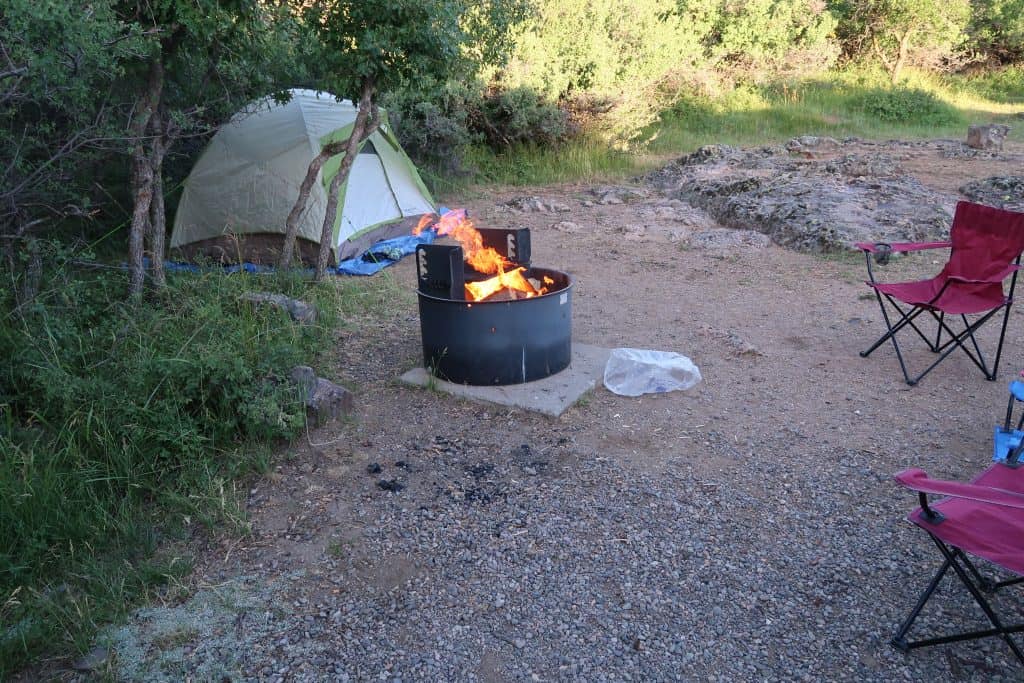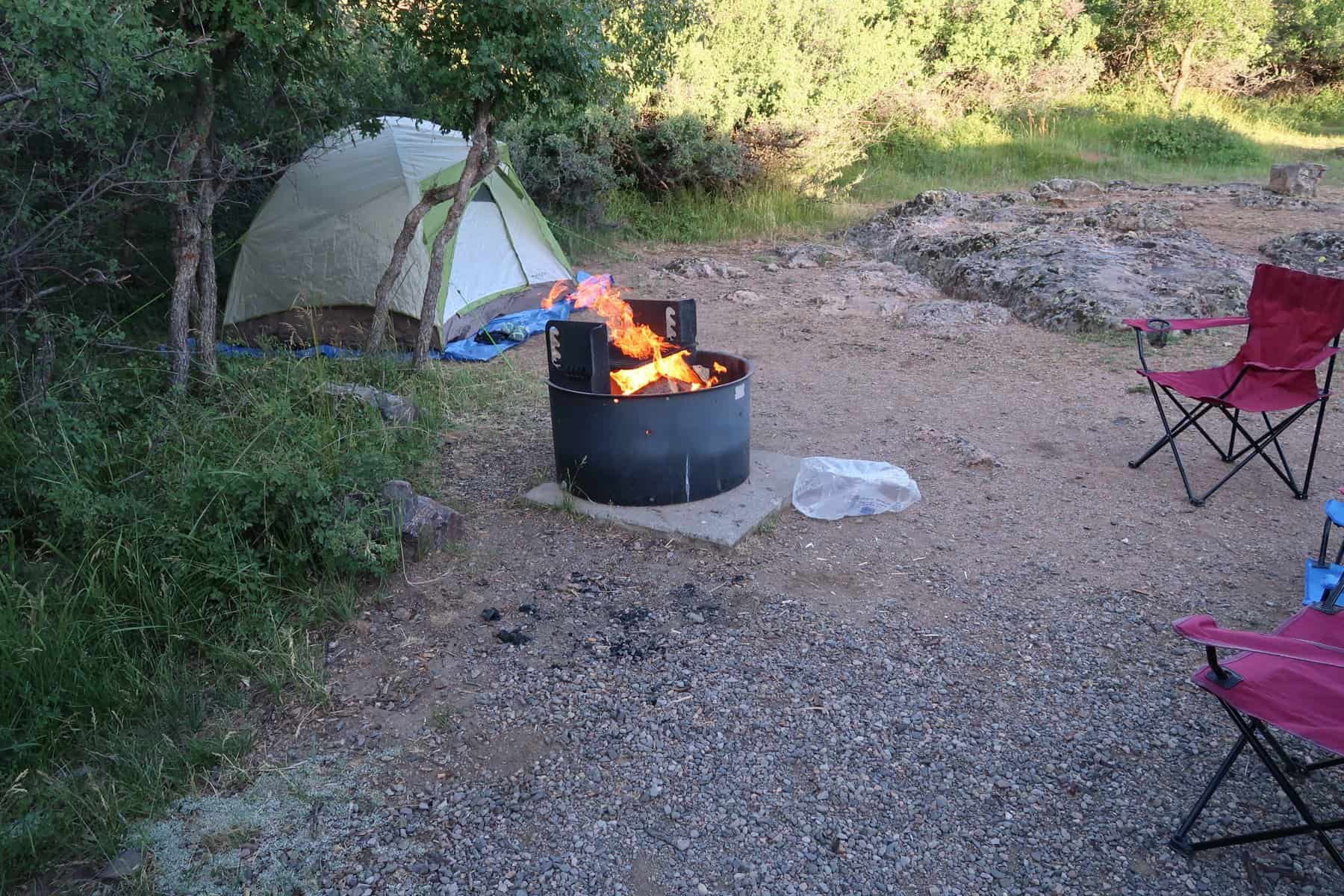Tent camping is a great way to bond with your children and create unforgettable memories. However, without proper preparation, your camping experience can quickly turn into a disaster.
It can also turn into a disaster for numerous other reasons: weather, animals, pit toilets combined with toddlers…the list is long.
Thus, to ensure a successful and stress-free (let’s be honest, “lower stress,”) trip, it is important to plan ahead and bring the right gear, food, and activities.
In this guide, we’ll cover everything you need to know to prepare for a successful tent camping experience with children.

Camping Gear
The right gear can make or break your camping experience. When camping with children, it’s important to consider their comfort and safety. Here are some essential items you should bring:
- Tent: Choose a tent that is big enough for your family and offers enough ventilation to prevent condensation. One important note on choosing a tent is to choose one that is rated for a family slightly larger than yours. Tents marketed as “Four Person Tents” are often best for three people. If you need to include gear space or avoid little night-kickers, using a tent larger than your family size becomes even more important!
- Sleeping bags and pads: Keep your children warm and comfortable with sleeping bags and pads that are suitable for their age and size. Two important considerations are the warmth of the bag and the shape of the bag. I would consider choosing a bag rated for ten degrees higher than the lowest temperature you expect to encounter. The bag rating assumes you are sleeping mostly, if not entirely, in the nude…not a great idea for camping with kids, and bundling up at night can actually ADVERSELY affect the warmth of the bag! Also, consider the bag shape. The mummy bag may feel too restrictive for some of your family members.
- Camping chairs: Portable camping chairs make it easier for your children to sit and relax around the campfire. They are not a “must,” but they make the experience more pleasant…and clean. Whether I am hiking or camping, I carry THIS chair. My kids each have their own similar chair no matter where we go.
- First aid kit: Pack a first aid kit with essentials such as band-aids, antiseptics, and pain relievers. For more tips on items you should carry with kids, check out THIS post.
Camping gear can get very expensive. Several years ago, I made the decision that we would be car-campers, as in the kind of people to drive up to their site, pitch their tent, and unload the cooler.
I purchased a truck load of gear, literally. We had a tent large enough to function as a soft-sided cabin. We all had 20 degree, down mummy bags. And I did a lot of online research to settle on mummy-style sleeping pads.
As it turned out, we are not car campers. We only used that huge tent once.
I also hate the confines of mummy bags and pads.
Borrow or rent some gear. Figure out what you like. Figure out what your camping style is. Even if you have the money to invest, honor that money by making sure you will use and enjoy the gear you purchase.
Food for Camp
Camping food should be simple, easy to prepare, and child-friendly.
What to Bring
Consider bringing pre-packaged meals such as instant oatmeal and ramen noodles and snacks such as trail mix and fruit. Consider family favorites or meals that are specially reserved for camping.
Our family often makes “walking tacos” at the campground. It is quick and easy to make, and everyone enjoys them. Another family favoriate at the campground, of course, are smores. You can vary the candies and flavors of this dessert as a special surprise.
Consider disposable plates and utensils for easy cleaning. Also, don’t forget to bring a portable camp stove or a portable grill for cooking AND matches or a lighter.
But remember, you can always cook cowboy-style over the campfire!
How to Pack Your Food
If you are “car camping,” pack a cooler with plenty of ice to keep food fresh and drinks cold. Ensure that it isn’t thawing to dangerous temperatures. If you are going on an extended trip, a highly recommend a daily cooler check-in time to ensure food safety.
Another important tip for those going on longer camping trips is to simply stop at stores near your destination.
You can go to Costco at home, then drive 18 hours to Colorado, have half of your food thaw and go bad too quickly, then have to trash it and grocery shop near the campground. Ask me how I know…
Stopping at a store is no problem. Risking sickness from unsafe food temperatures is.
Finally, in our family we find that food decisions and packing is a major pre-trip blackhole of planning time. If you are camping near a developed area, it may be easier to get everyone out the door as stress-free as possible by planning to food shop at your destination.
However you choose to prepare your camping cuisine, remember, everything tastes better around a campfire!
Bathroom Time!
Whether it is because I am “high maintenance,” or because I have a daughter, or because I am simply risk-averse, I have a lot of thoughts on bathrooming at camp. As someone who has spent years working in and around non-profits that protect children, I will share one absolute MUST…
Please do not let a child go to the bathhouse alone…ever.
Now, for real tips on bathroom gear for times when standing in the woods is not a viable option, check out my video here:
Campground Activities
Keeping your children entertained and engaged is key to a successful camping trip. Here are some fun activities to consider:
- Nature walks: Take a walk around the campsite and teach your children about the different plants, animals, and insects they encounter. Do a scavenger hunt!
- Campfire games: Play classic camping games such as I Spy and 20 Questions around the campfire. Sing, read, tell stories, or tell jokes. It is always great family time around the campfire!
- Crafts: Bring along some simple craft materials such as paper, markers, and glue, and let your children get creative. My daughter and I have spent hours creating “sticker stories” out of index cards and sticker packs. We have also dabbled in water painting at the campground.
- Stargazing: Lie down on a blanket and look up at the stars. Teach your children about the different constellations. Always keep a constellation guide such as THIS in your camping kit!
- Ranger Programs: Take advantage of these national park staples! Rangers often have evening programs that can either engage your kiddos OR be a great place for them to meet new friends!
Camping Safety
Camping can be a safe and enjoyable experience if you follow some basic safety guidelines. Here are a few things to keep in mind:
- Always supervise your children when near water or in the woods.
- Teach your children about fire safety, and never leave a campfire unattended.
- Make sure your children wear sunscreen and hats to protect them from the sun.
- Have a plan in case of an emergency such as carrying a fully charged cell phone and knowing the location of the nearest hospital.
With the right gear, food, and activities, your tent camping experience with children can be a success. By preparing ahead of time and following basic safety guidelines, you’ll be able to enjoy a stress-free(ish) and memorable trip. So, pack your bags, grab your tent, and head out into the great outdoors for an adventure your family will never forget!
* Included Amazon links are affiliate links that may pay NPS Family Travel a small commission on any purchased made.

